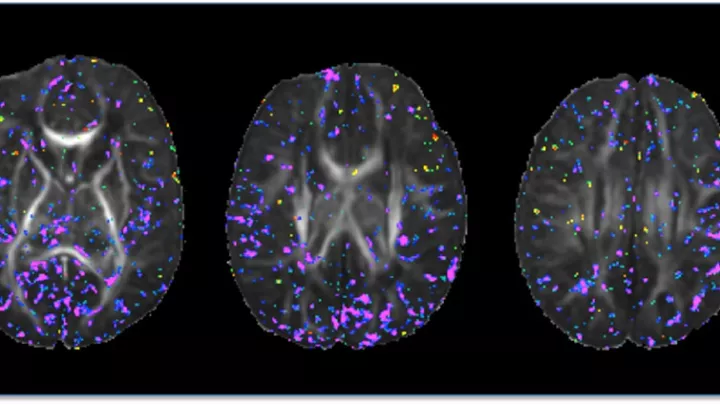
Timing is Everything: Prenatal drug exposure affects brain development and leads to long-term deficits
Now more than ever, we understand that the prenatal period represents a crucial time of brain development. Maternal drug use during this period has been shown to lead to poor developmental outcomes for the child. A new study published in JAMA Pediatrics shows, for the first time, that brain anatomy and metabolism are affected by prenatal drug exposure and that these brain changes underlie neurodevelopmental outcomes one year later. The study, led by Children’s Hospital Los Angeles investigator Bradley Peterson, MD, uses multiple measurements to show that drug use affects critical timing in brain development.
The controlled, prospective study was led by Dr. Peterson, Chief of the Division of Child Psychiatry at CHLA. He and his team followed 118 mothers and their newborn infants, measuring brain structure, metabolism and, later, developmental outcomes. This was the first study to use multiple types of brain imaging in the same infant, providing different windows into what is occurring in the newborn brain.
In infants whose mothers used marijuana, cocaine or narcotics substances while pregnant, Dr. Peterson’s team observed a shift in the timing of brain development, compared to infants whose mothers had no history of drug or alcohol abuse. This altered timing was responsible for poorer outcomes one year later, as measured by standardized neurodevelopmental testing.
“The brain is growing rapidly during this time of life,” says Dr. Peterson. “Some regions grow more quickly, while others develop more slowly. This timing pattern is very important.”
The study showed that babies exposed to drugs in the womb exhibited an exaggeration of this pattern. The parts of the brain that normally develop quickly matured even faster with drug exposure, while the parts that normally take longer to develop did so more slowly.
“This timing of maturation is everything,” says Dr. Peterson. “Development must take place according to a very strict timetable. If you slow it down or speed it up, there are going to be important consequences for longer-term outcomes.”
While it has been documented that babies exposed to illicit substances have poorer outcomes at one-year assessments, Dr. Peterson’s imaging study provides new evidence of the mechanisms leading to these consequences. The data set includes four types of measurements, including anatomical imaging and measurement of metabolites that signal maturity of brain cells. All four measurements showed the same exaggerated pattern of brain maturity.
“We are trying to understand what is happening with prenatal drug exposure,” says Dr. Peterson. “The main finding here is that this exaggerated pattern of brain development actually accounted for performance at 1 year of age. So these aren’t just numbers; these are real-world outcomes.”


